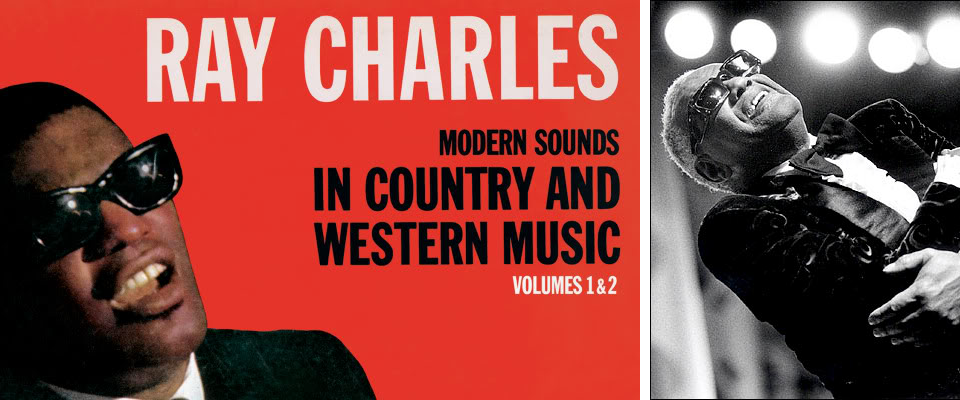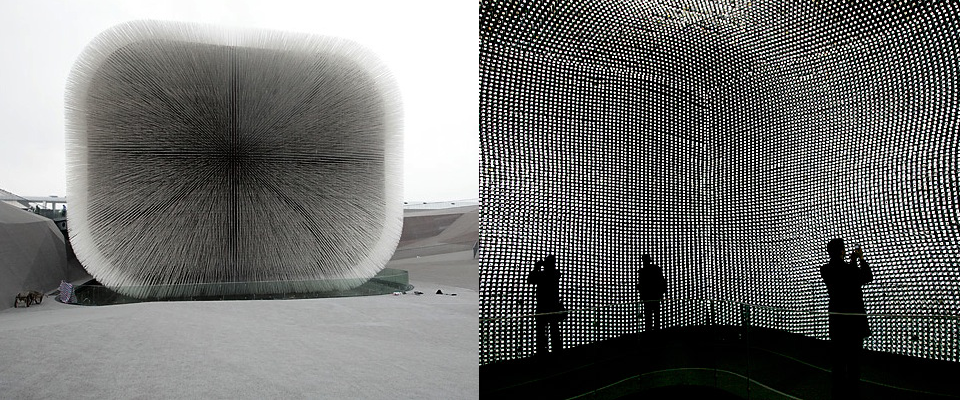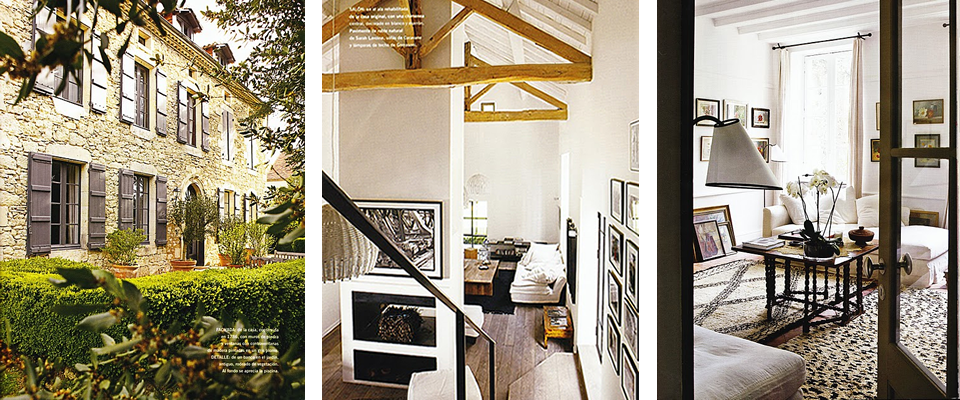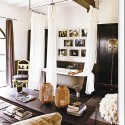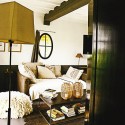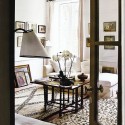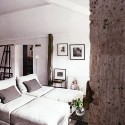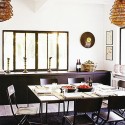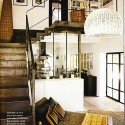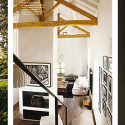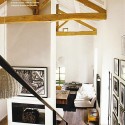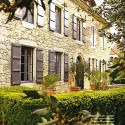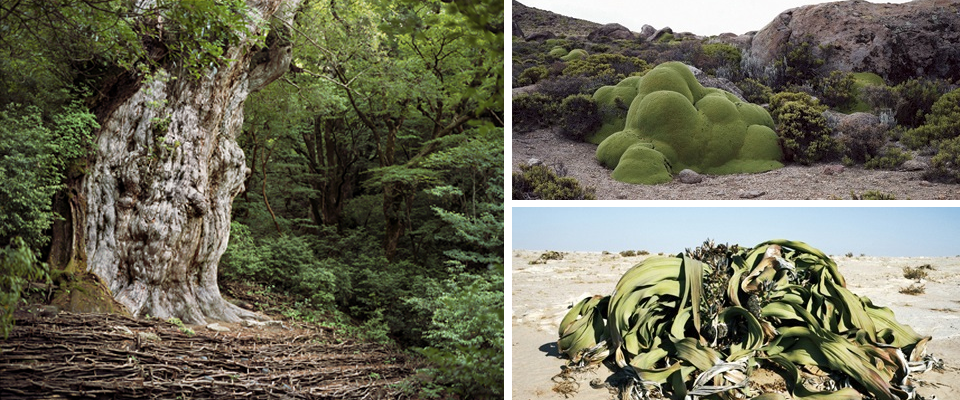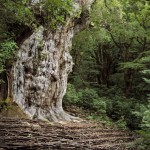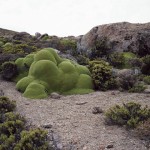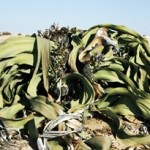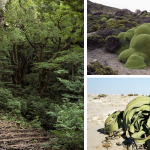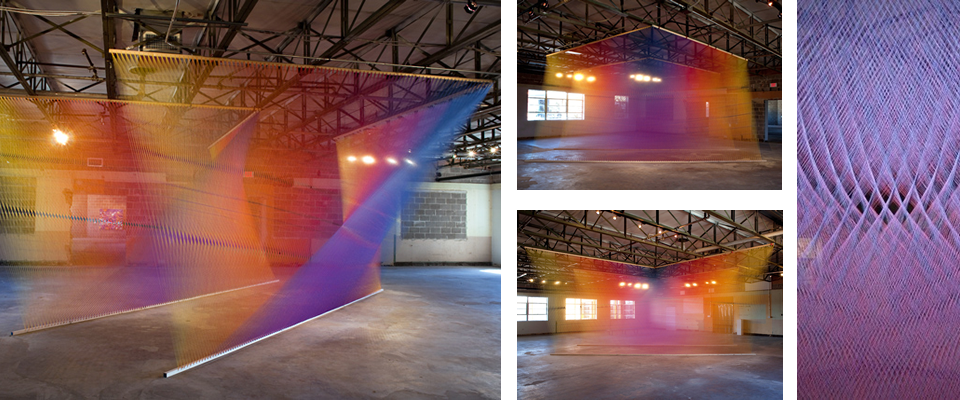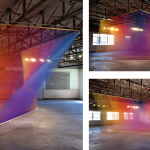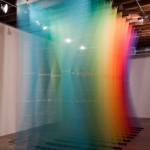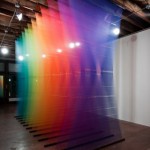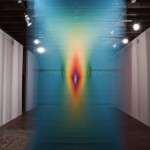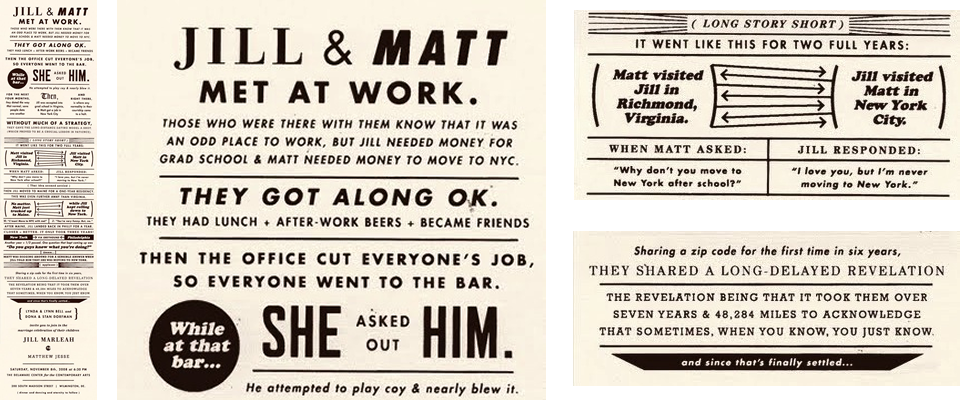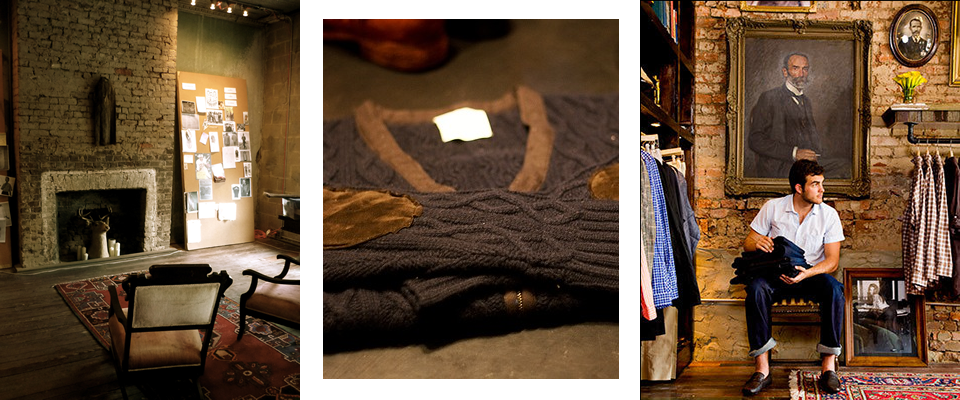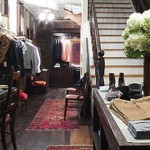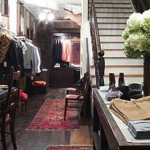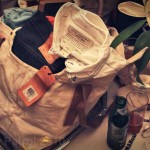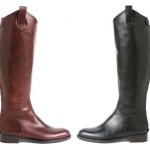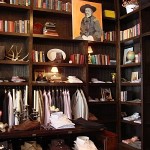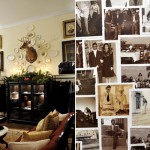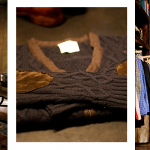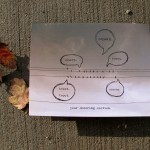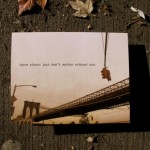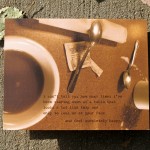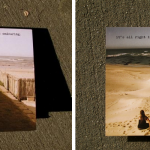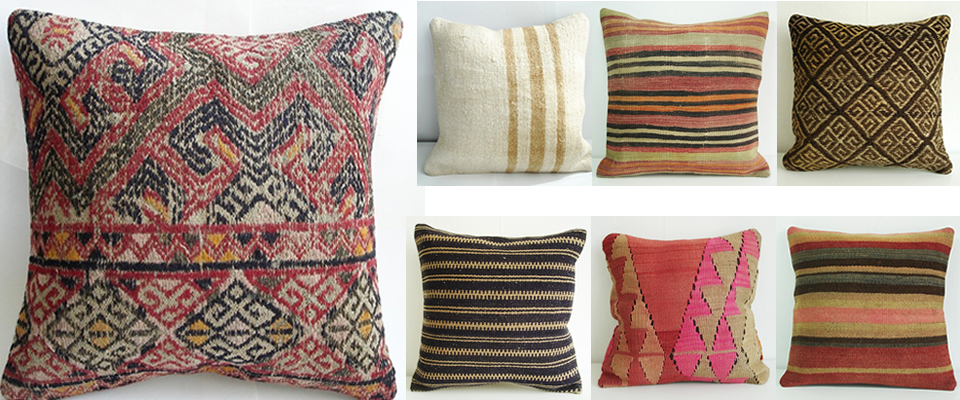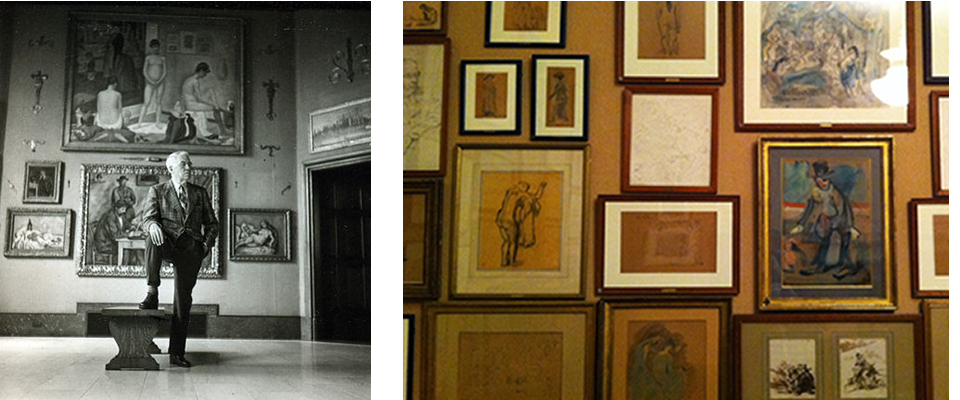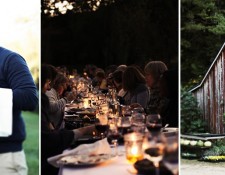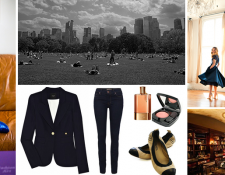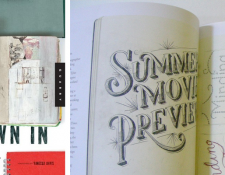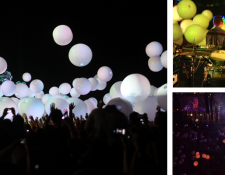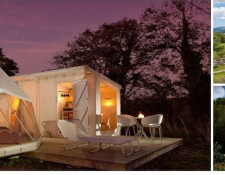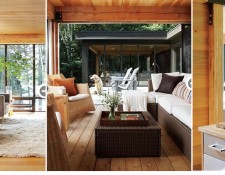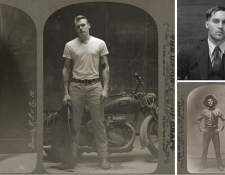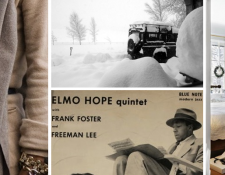Listening To: Ray Charles Modern Sounds in Country & Western Music
I just do not get sick of this album from 1962. I love hearing Ray’s arrangements of these classic country songs.
The album was his idea, as he wanted to cover and pay homage to these country songwriters whom he greatly admired, but the studio had little faith that it would have any success. Thus, they basically left him alone to create it on his own with his recording supervisor, not thinking it would ever go anywhere.
Much to their surprise, the album had multiple hit singles (that went on to become classics in Ray’s repertoire), and created a interesting cross-polination of audiences, from country lovers who never otherwise would have listened to R&B but wanted to hear their favorites reinterpreted, and of Ray fans who never would have been interested in exploring country.
The Seed Cathedral
Have you see this? The Seed Cathedral? I just came back across it after it was named one of the top 50 inventions of 2010 by Time Magazine, and it is indeed pretty amazing. The “cathedral,” designed by architect Thomas Heatherwick, was Britain’s contribution to the Shanghai World Expo, which had a theme of “Better City, Better Life.”
Its facade is constructed from 60,000 fiber optic rods, which filter light into the interior in the day time and radiate light outward at night. During the day, this light illuminates the different seeds at the end of each of the 60,000 rods. The seeds were provided by Millenium Seedbank project, which has an aim of collecting the seeds of 25% of the world’s species by 2020, and after the building is taken apart, the rods are going to be distributed to schools around China and the UK as a legacy of the project.

The rods are also able to sway gently in the breeze, making the entire building look like a giant dandelion. The video below shows this, as well as really cool views of the interior of the space all lit up. It’s pretty amazing!
For more info on the mission of the project and its construction, go here.
Curated by:
Eliza Coleman
Section:
Arts Visuels
Labels:
architecture, green, installation
Gers, France
Loving the France meets modern/industrial meets Morocco vibe of this home in Gers, France– white linen, reclaimed wood, concrete floors and stairs, Moroccan rugs, open floor plan, black and white photography, comfy chaises and fluffy poufs… all hidden behind this gorgeous facade.
Designed by Sarah Lavoine for Christine Hours, of the French brand Caravane. Shot by Jean Marc Palisse.
[via]
The Oldest Living Things in the World
Oh. My. Talk about wonderlust. I love this project. Rachel Sussman created this project, called “The Oldest Living Things in the World,” as a photographer with a fine arts background who wanted to use photographs to expand our minute human experience and understanding of time.
Inspired by an ancient tree in Japan while on a photography trip, she realized that it would be really interesting to try to document the oldest living species, and was amazed to find that no one had ever done a project on this subject in either the arts or the sciences. So, she took it upon herself! The result is this portfolio of literally the oldest living things on the earth– all these old plants that are all at least two THOUSAND years old!
In the gallery above (click thumbnails to enlarge, then click on the right side to go to the next image), the images are as follows:
jomon sugi japanese cedar (2,180 – 7,000 years old, yaku shima, japan); la llareta (up to 3,000 years old, atacama desert, chile); welwitschia mirabilis (2,000 years old; namib naukluft desert, namibia)
2010/08 Rachel Sussman from CreativeMornings on Vimeo.
Curated by:
Eliza Coleman
Section:
Wonderment
Labels:
Arts Visuels, earth, nature, Photography
Gabriel Dawe
I seem to have a thing for prismatic installations made from unexpected materials. Remember these tape installations by Rebecca Ward? And the twine installations by Ball-Nogues Studio? Well, they were all cool, and I still have room to be totally enamored with yet another kaleidoscope creation– this time made from thread by Gabriel Dawe. I love the way these change depending on the angle from which they’re viewed.
From HUH. Magazine:
“After becoming bored and frustrated by the restraints imposed upon him by his graphic design course, Gabriel Dawemoved from his hometown of Mexico City to Montreal, Canada, and began creating artwork using techniques that were considered women’s work by many of Mexico City’s inhabitants. Inspired by the creations of Anish Kapoorand Victor Vasarely, Dawe’s work developed into huge, viewer absorbing installations made from thousands upon thousands of different colour threads and taking up to 140 hours and four to five weeks to create.
While many of the big tapestries and rugs are made by men in Mexico City, the thread used in Dawe’s pieces are usually used on the smaller, less physically challenging looms that are operated by women. By using these materials for a piece which physically exhausts Dawe, the installation subverts traditional constructs and challenges Mexico City’s machismo culture. “I enjoy the endurance aspect of my work, the obsessiveness and repetition” says Dawe, and is he the same in his day to day life? “I’m definitely a perfectionist, but I’m not very organised in my day to day life. I’m kind of a mess, actually. [Laughs]“”
[via]
Graphic Fix: Long Story Short
You probably won’t be surprised to learn that the groom is also a graphic designer… and that he designed this invitation.
(Click for full size.)
Style Crush: Billy Reid
Billy Reid, winner of the 2010 CFDA/Vogue Fashion Fund award, has an aesthetic at once so warm, authentic, classic, tailored, and rustic that I wish I could bottle it.
His clothes are so well-designed that they don’t seem new– they’re just so right that you assume they must be vintage classics from another era. It’s just as if they always were, they’ve always existed, and you just happened to find them now. It’s like when you can say about a decorator that their houses don’t seem “decorated”– it means they feel lived in, that they tell a story and have a past, and that someone didn’t just come in and buy everything at once– and it’s a feat to accomplish.
That’s they way both his clothes and his interior spaces feel. Nothing strikes the eye as trying too hard, they’re just perfectly executed classics with personality. They’re inspired by a rich history, but not stuck in the past.
And to make you love him even more, he lives and works in Florence, Alabama, where he also opened his flagship store (he’s a native Southerner– born in Amite, LA). Above and in the gallery, images from his Florence store, as well as the Bond St. store, his office/design space in Florence, and his wares.
Photos from Robbie Caponetto, nyt, selectism.
Curated by:
Eliza Coleman
Section:
Style Files, Tastemakers
Labels:
fashion, interiors, Southern
it’s all right in front of you.
I love these retro-inspired “just because” cards by Dani Press. Dani takes all the photos herself and turns them into these sweet and original cards.
Check out more here– it’s fun to look around at the different ones because she gives a little background on each photo and where/why it was taken, which makes them feel even more special.
LustList: Kilim Pillows
Just discovered these gorgeous antique wool kilim-covered pillows via poppytalk, and now I’ve got the major wantsies. Sukan, the etsy shop, is like a treasure trove, and the wares are totally affordable (considering what they are).
The Art of the Steal
If you ever took an art history class, you probably learned about the Barnes Foundation. The restricted-access private art collection of Albert C. Barnes outside of Philadelphia was, and is, legendary. Barnes, with unbelievable foresight, put together a collection of dozens of Renoirs, Matisses, Picassos, and other 19th and 20th century masters, many of whom were not even being collected yet by anyone else. In addition to this, he amassed an extensive African art collection, which he was passionate about and saw as just as important as the other Western art movements while his contemporaries still considered it “primitive art.”
[Image: The original blueprint for the Barnes Foundation, 1922]
As an art history major, I was always dying to go to the Barnes Foundation– a grand building outside of Philadelphia where the whole collection was housed, carefully curated according to Barnes’ preference for a style he called “wall ensembles,” that gathered art around themes, rather than by time period.
The foundation, which Barnes had intended as an educational center, was open to small numbers of students and educators and was known for its excellent seminars and classes. But after Barnes’ death, though his will was definitive in stating that he wanted the collection to remain as one collection in perpetuity, never to be sold off, the fate of the collection was exposed to the larger forces in the art world (including his biggest rival), starting a great controversy over what would happen to this famous collection.
[Image: The digital rendering for the new building in Philadelphia]
Today, a new building is being added to the Phildelphia Museum of Art to house the collection (after lots of drama, as detailed in the documentary). Because it will now be housed in a public museum in a major city, the collection will be much more highly accessible, but does that justify the fact that this was against the wishes of the man who built and owned the collection? And was largely carried out by one of his rivals? Check out the trailer to see what happened and how… it’s one of the greatest present-day dramas in the art world!

